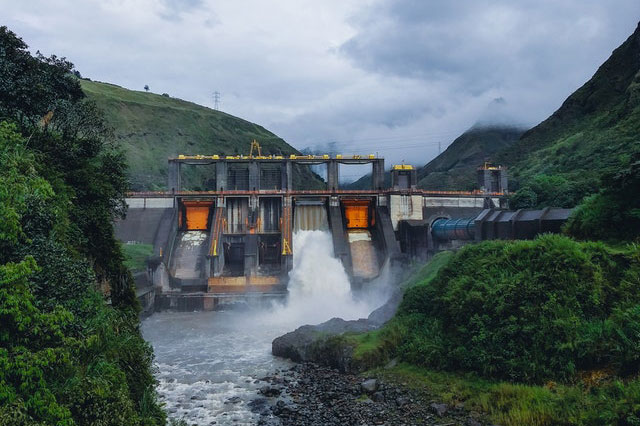Rumangabo – The vital Matebe hydroelectric power plant in eastern Democratic Republic of Congo powers Goma a city with more than one million inhabitants and part of the nearby Rutshuru territory.
But the key infrastructure is caught up in fighting between the army and the M23 rebel group, one of many in Congo’s restive east, which launched an offensive against villages and army positions in Rutshuru on March 28 and 29.
“We evacuated all the staff. Only a ‘skeleton team’ remains to protect the installations and ensure the plant does not stop,” said Emmanuel de Merode, director of the UNESCO-listed Virunga National Park.
ALSO READ | UN peacekeeper killed in northeast DRC
Formed from the remnants of a Congolese Tutsi rebellion, the M23 had been defeated by the army in 2013 after it captured Goma, the capital of North Kivu province, in 2012.
But the movement resurged late last year, claiming the Congolese government did not respect a 2013 peace deal on allowing demobilised rebels to return as a step towards reintegration into civilian life.
De Merode flew from Goma on Friday to inspect the plant, which has a power of 14 megawatts and was constructed by the Virunga National Park, and raise the morale of the remaining guards and technicians.
The Belgian toured Matebe and the newly started construction site of another power plant in Rwanguba, which will double Goma’s energy supply in three years’ time.
“By your presence and by your commitment, you are defending vital installations for the population of North Kivu,” he told park guards in a solemn address, before returning to his headquarters in Rumangabo.
“We were caught in the crossfire between the M23 and the army,” said Ali Masudi Bwana, a security official at the Matebe plant, of the March attacks.
The rebels “shot machine gun fire in our direction”, he added, pointing to a small wooded hill overlooking the village of Rwanguba and the Rutshuru river that powers the plant.
Gorillas in danger
M23 militiamen have taken control of around 10 settlements without facing much resistance and established bases on Mount Sabyinyo, which demarcates the border between Congo, Uganda and Rwanda.
ALSO READ | Four injured as police fire on DRC protesters
After losing dozens of soldiers in M23 attacks, Congo’s army in late February launched artillery fire into the Virunga National Park’s gorilla sector to dislodge the rebels.
Despite the risks, teams from the Virunga National Park in March resumed their monitoring of mountain gorillas, an endangered species that like the M23 straddles the frontier between Congo, Rwanda and Uganda.
Follow African Insider on Facebook, Twitter and Instagram
Source: AFP
Picture: Pexels
For more African news, visit Africaninsider.com


